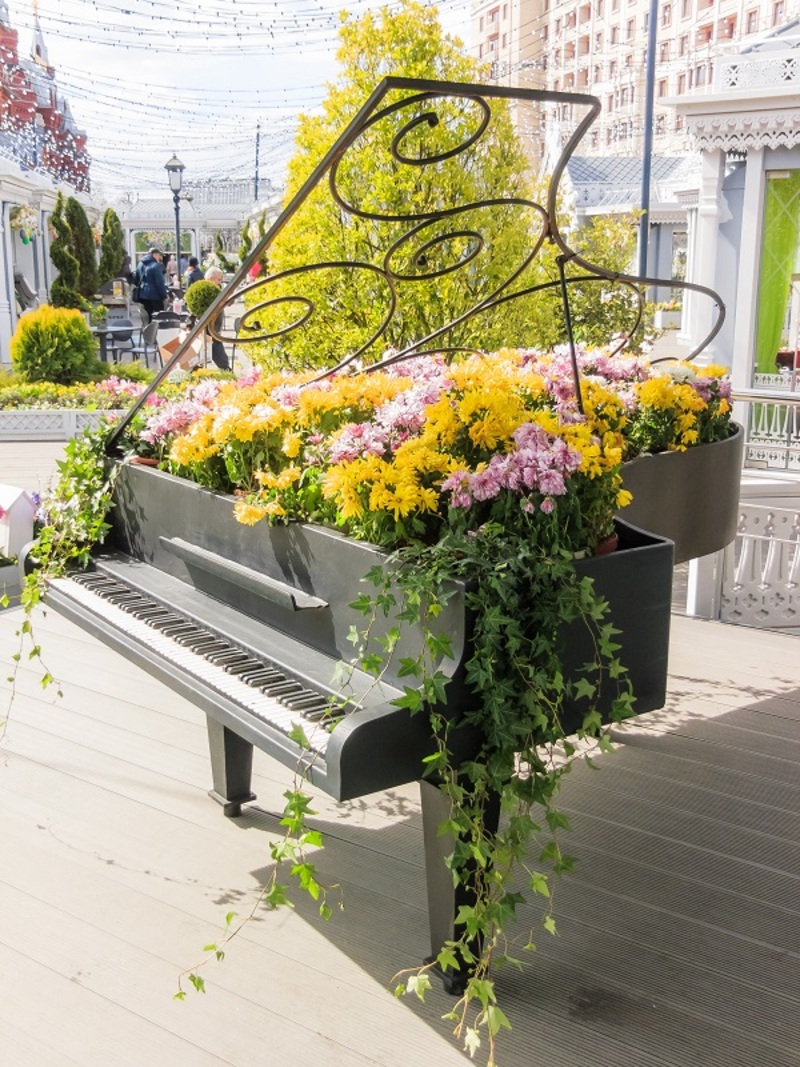The Art and Science of Hydrangea Care
Posted on 29/06/2025
The Art and Science of Hydrangea Care: A Comprehensive Guide
Hydrangeas are renowned for their breathtaking blooms and lush foliage, making them a beloved choice for gardeners worldwide. Whether you're captivated by the robust pom-poms of mophead hydrangeas, the delicate lacecap varieties, or the stately panicle types, proper hydrangea care is crucial for maintaining their beauty. In this extensive guide, we'll delve into everything you need to know about the art and science of nurturing these spectacular shrubs, ensuring they flourish in your garden year after year.

Understanding Hydrangeas: Types and Varieties
Before embarking on your hydrangea care journey, it's essential to identify which species and varieties you have or wish to grow. Each type has unique requirements and will respond differently to environmental factors.
Main Types of Hydrangeas
- Hydrangea macrophylla (Bigleaf/Mophead/Lacecap): Known for their large, colorful blooms, often in shades of blue, pink, or purple. Popular varieties include 'Endless Summer' and 'Nikko Blue'.
- Hydrangea paniculata (Panicle): Features cone-shaped flowerheads and is highly adaptable to various climates. 'Limelight' and 'PeeGee' are notable cultivars.
- Hydrangea quercifolia (Oakleaf): Distinguished by oak-shaped leaves and white flowers that age to pink.
- Hydrangea arborescens (Smooth): Native to North America, producing large, dome-shaped flower clusters. 'Annabelle' is among the most famous.
- Hydrangea petiolaris (Climbing): A vining species perfect for trellises and walls, offering attractive white blooms.
Tip: The art of hydrangea selection lies in matching the right variety to your garden space and climate.
Choosing the Right Location for Your Hydrangeas
Location is crucial for the science and art of hydrangea care. While hydrangeas are relatively adaptable, they have specific needs regarding sun exposure and soil conditions.
- Sunlight: Most hydrangeas prefer morning sun and afternoon shade. Too much direct, harsh sunlight can scorch the leaves, while too much shade can limit flowering.
- Soil: Hydrangeas thrive in rich, well-draining, slightly acidic to neutral soil. Incorporate organic matter such as compost to improve structure and fertility.
- Shelter: Planting near a structure or under taller trees can protect hydrangeas from strong winds and excessive sun.
Pro Tip: Observe your garden's microclimates. The art of hydrangea care involves patience and understanding how your plant responds to its surroundings.
Planting Hydrangeas: Laying a Healthy Foundation
Successful hydrangea growth begins with proper planting techniques. Hydrangea planting involves both preparation and timing:
- Best Time to Plant: Early spring or fall, when temperatures are mild and there's plenty of moisture.
- Spacing: Allow at least three feet between plants for adequate airflow and growth.
- Digging the Hole: Make the hole twice as wide and just as deep as the root ball.
- Soil Amendment: Mix in compost or peat moss to enhance moisture retention and fertility.
- Watering: Water thoroughly after planting to settle the soil around the roots.
The art of hydrangea planting is about giving your shrub the best possible start in life.
Watering Hydrangeas: Mastering Moisture Balance
One of the most critical aspects of hydrangea care is proper watering. Hydrangeas are known for their name, which means "water vessel," so keeping them hydrated is essential.
Key Hydration Tips
- Consistent Moisture: Keep soil evenly moist, especially during dry spells. Avoid waterlogging, which can lead to root rot.
- Deep Watering: Water deeply once or twice a week, allowing moisture to penetrate at least 6 inches into the soil.
- Mulch: Apply 2-3 inches of organic mulch to conserve moisture, regulate temperature, and suppress weeds.
- Morning Watering: Water in the early morning to minimize evaporation and fungal issues.
Science tip: Use a moisture meter to monitor soil conditions, especially during extreme weather.
Fertilizing Hydrangeas: Feeding for Flourishing Blooms
Nutrient management is both an art and science in hydrangea care. Proper fertilization can maximize both growth and flower production.
- Best Fertilizer: Use a balanced, slow-release fertilizer in early spring, such as 10-10-10 or 12-4-8, following label instructions.
- Avoid Over-Fertilizing: Too much nitrogen can result in excessive leaf growth at the expense of blooms.
- Supplemental Feeding: If growth is slow, supplement with diluted fish emulsion or compost tea during the growing season.
Tip: Conduct a soil test every 2-3 years to fine-tune your fertilizing regimen.
Pruning Hydrangeas: Artful Shaping and Bloom Timing
The science of hydrangea pruning can seem daunting, as improper timing can lead to a lack of blooms. Here's how to prune each main variety:
- Bigleaf & Oakleaf Hydrangeas: Bloom on old wood. Prune immediately after flowering, trimming back stems to shape the shrub or remove dead wood.
- Panicle & Smooth Hydrangeas: Bloom on new wood. Prune in late winter or early spring before new growth emerges; cut back by one-third to encourage robust growth and abundant blooms.
- Climbing Hydrangeas: Minimal pruning needed. Simply remove spent flowers and dead or damaged stems.
Pruning hydrangeas is an art that comes with practice and observation, ensuring the plant's form and flower production remain optimal.
Soil pH and Flower Color: The Science Behind Blue and Pink Hydrangeas
One of the most fascinating aspects of hydrangea care is the ability to change flower color in certain species (notably Hydrangea macrophylla), based on soil pH:
- Blue Blooms: Achieved with acidic soils (pH below 6), which make aluminum available to the plant.
- Pink or Red Blooms: Result from alkaline soils (pH above 7), limiting aluminum uptake.
- Purple Blooms: Often occur when soil pH hovers between acidic and alkaline.
How to Change Hydrangea Color
- To turn blue: Add aluminum sulfate to your soil and keep pH low.
- To turn pink: Add lime to raise soil pH and prevent aluminum absorption.
Important: White-flowered hydrangea varieties cannot be changed by soil amendments.
Common Hydrangea Problems and Solutions
Successful hydrangea care involves vigilance against potential threats. Here are the most frequent issues and their solutions:
Yellow Leaves
- May indicate overwatering, poor drainage, or nutrient deficiency.
- Solution: Improve soil drainage, reduce watering, and apply a balanced fertilizer.
No Blooms
- Often due to improper pruning, cold winter damage, or excessive nitrogen application.
- Solution: Prune at the right time, protect with mulch in winter, and balance your fertilizer mix.
Pests and Diseases
- Common pests: Aphids, spider mites, and scale insects.
- Solution: Hose off pests, use insecticidal soap, and encourage natural predators like ladybugs.
- Diseases: Powdery mildew, leaf spot, and root rot.
- Solution: Plant in areas with good air circulation, avoid overhead watering, and remove affected foliage promptly.
Seasonal Hydrangea Care Checklist
Spring
- Remove winter mulch
- Apply balanced fertilizer
- Check for winter damage and prune if needed
- Monitor watering as growth resumes
Summer
- Maintain consistent watering
- Deadhead spent blooms for prolonged flowering
- Watch for pests and diseases
- Mulch to conserve moisture
Fall
- Reduce fertilizer application
- Continue watering during dry spells
- Mulch roots for winter protection, especially in colder climates
Winter
- Protect from harsh winds with burlap or straw in exposed areas
- Avoid unnecessary disturbance to dormant plants
Propagation: Growing New Hydrangeas
Part of the joy in the art and science of hydrangea care is propagation. Hydrangeas can be multiplied through several methods:
- Softwood Cuttings: Take cuttings in late spring or early summer, plant in moist soil, and keep humid until roots form.
- Layering: Bend a flexible stem to the ground, bury part of it, and wait for roots to develop before separating from the main plant.
- Division: Some hydrangeas, like arborescens, can be divided in early spring.
Creative Uses for Hydrangeas in Your Garden
The art of hydrangea care goes beyond maintenance. Explore innovative ways to incorporate these showy shrubs into your landscape:
- Hedges or Borders: Create living fences or outline garden rooms.
- Foundation Plantings: Use hydrangeas to soften the edges of your home or patio.
- Mixed Perennial Beds: Pair hydrangeas with hostas, ferns, or astilbes for varied texture and color.
- Containers: Compact varieties thrive in large pots for porches and patios.
- Cut Flowers & Dried Arrangements: Enjoy spectacular blooms indoors or dry them for lasting decor.

Expert Tips for Year-Round Hydrangea Success
- Observe Regularly: Familiarize yourself with your hydrangeas' natural rhythm to quickly spot and address issues.
- Be Adaptable: Not all hydrangeas are alike. Adjust care techniques to suit specific species and your local conditions.
- Record Keeping: Keep a garden journal of bloom times, pruning, and feeding schedules for continuous improvement.
- Join a Community: Connect with local garden clubs or online forums for shared experiences and troubleshooting tips.
Conclusion: The Joy of Mastering Hydrangea Care
Nurturing hydrangeas truly embodies both art and science. By understanding their needs, responding to their natural cycles, and applying creative landscaping ideas, you can transform your outdoor space into a hydrangea haven. Whether you're a beginner or a seasoned gardener, embracing the complexities and delights of hydrangea care will reward you with stunning displays for years to come.
For more detailed guidance on hydrangea maintenance, troubleshooting plant issues, or inspiring garden design ideas, explore our additional resources and start cultivating your hydrangea masterpiece today!





